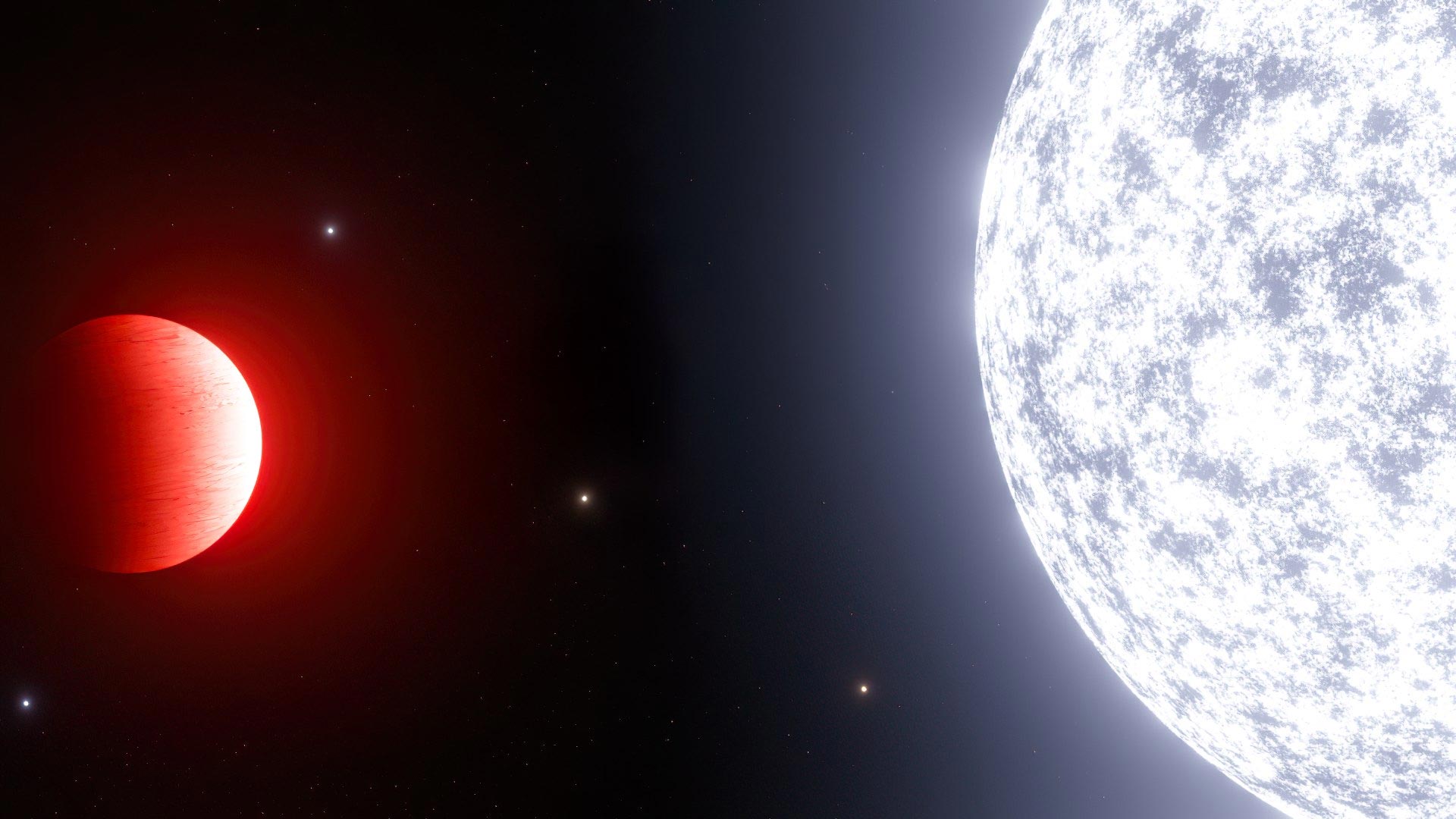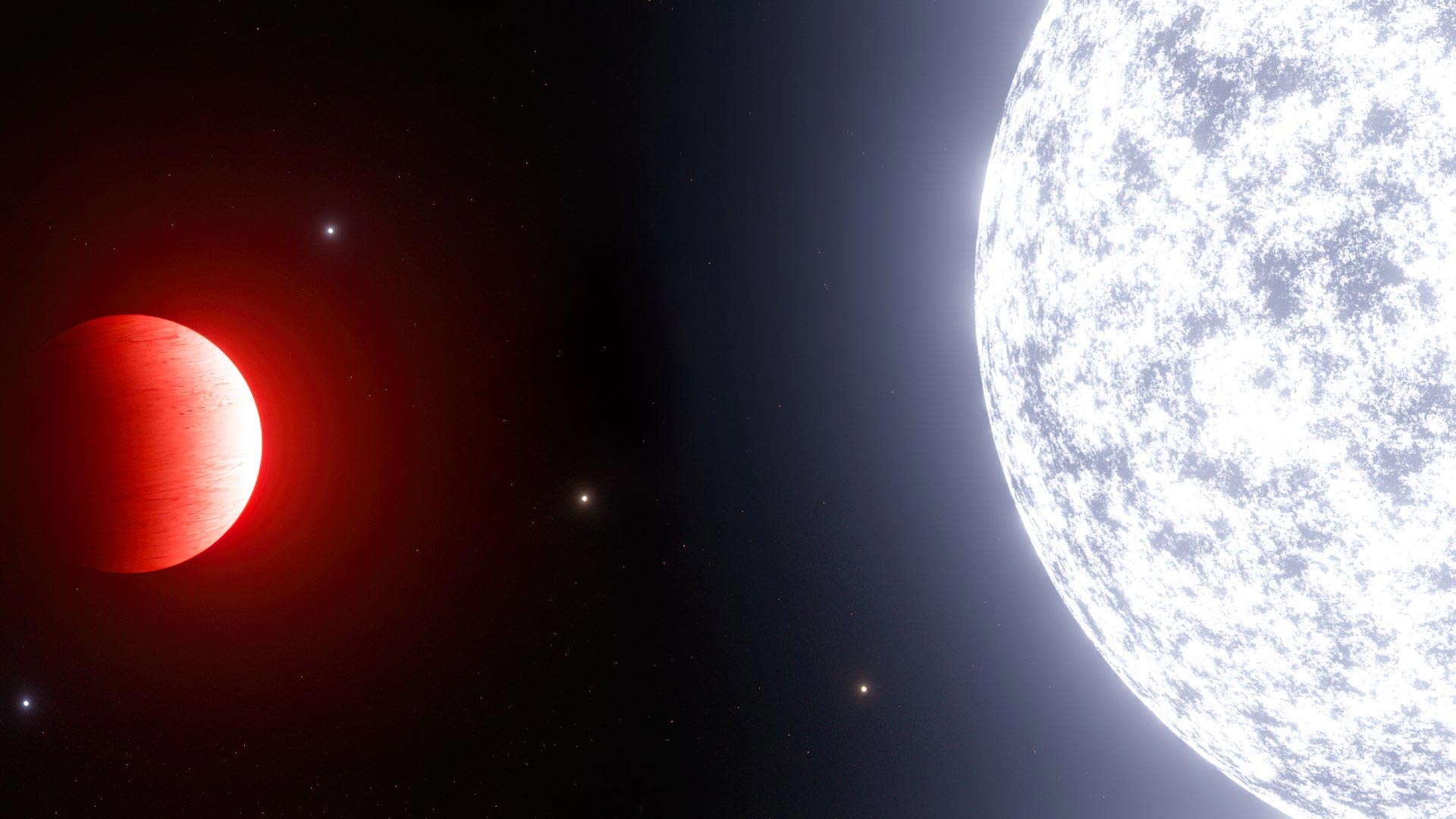
Forscher der Universität Lund haben das seltene Metall Terbium in der Atmosphäre von KELT-9 b, dem heißesten Exoplaneten der Galaxie, entdeckt. Mit einer neuen Analysemethode kann das Team die Exoplaneten nun genauer untersuchen, was zu Erkenntnissen über das Alter, die Zusammensetzung und die Möglichkeit erdähnlicher Planeten der Exoplaneten führen könnte. Bildnachweis: Bibiana Prinoth
Das seltene Metall Terbium kommt darin vor[{“ attribute=““>exoplanet’s atmosphere for the first time. Researchers at Lund University in Sweden have also developed a new method for analyzing exoplanets, making it possible to study them in more detail.
KELT-9 b is the galaxy’s hottest exoplanet, orbiting its distant star about 670 light years from Earth. The celestial body, with an average temperature of a staggering 4,000 degrees Celsius, has since its discovery in 2016 excited the world’s astronomers. The new study in the journal Astronomy & Astrophysics reveals discoveries about the scalding-hot oddball’s atmosphere.
“We have developed a new method that makes it possible to obtain more detailed information. Using this, we have discovered seven elements, including the rare substance terbium, which has never before been found in any exoplanet’s atmosphere,” says Nicholas Borsato, PhD student in astrophysics at Lund University.
Terbium is a rare earth metal that belongs to the so-called lanthanoids. The substance was discovered in 1843 by the Swedish chemist Carl Gustaf Mosander in the Ytterby mine in the Stockholm archipelago. The substance is very rare in nature, and 99 percent of the world’s terbium production today takes place in the Bayan Obo mining district in Inner Mongolia.
“Finding terbium in an exoplanet’s atmosphere is very surprising,” says Nicholas Borsato.
Most exoplanets are discovered by astronomers making measurements of how brightly stars shine. When an exoplanet passes in front of its star, the star’s brightness decreases. Thanks to their advanced measurement method, the researchers have succeeded in filtering out the dominant signals in KELT-9 b’s atmosphere. This opens up the possibility of finding out more about the atmospheres of other exoplanets.
“Learning more about the heavier elements helps us, among other things, to determine the age of the exoplanets and how they were formed,” explains Nicholas Borsato.
Exoplanets, or extrasolar planets, are planets that are in other solar systems than our own. The first confirmed discovery was made in 1992, of an exoplanet orbiting a neutron star. Three years later, the first exoplanet with a sun-like star was discovered. Since then, over 5,000 exoplanets have been recorded. The existence of exoplanets often raises questions about the possibility of life elsewhere in the universe.
Detecting heavy elements in the atmospheres of ultra-hot exoplanets is another step toward learning how the atmospheres of planets work. The better we get to know these planets, the greater chance we have of finding Earth 2.0 in the future,” concludes Nicholas Borsato.
Reference: “The Mantis Network. III. Expanding the limits of chemical searches within ultra-hot Jupiters: New detections of Ca I, VI, Ti I, Cr I, Ni I, Sr II, Ba II, and Tb II in KELT-9 b” by N.W.B Borsato, H. J. Hoeijmakers, B. Prinoth, B. Thorsbro, R. Forsberg, D. Kitzmann, K. Jones and K. Heng, Accepted, Astronomy & Astrophysics.
DOI: 10.1051/0004-6361/202245121

„Gamer. Unglückliche Twitter-Lehrer. Zombie-Pioniere. Internet-Fans. Hardcore-Denker.“






More Stories
Identische Dinosaurier-Fußabdrücke auf zwei Kontinenten entdeckt
Der Perseverance-Rover der NASA beginnt einen steilen Aufstieg zum Rand eines Vulkankraters auf dem Mars
Der Generalinspekteur der NASA veröffentlicht einen vernichtenden Bericht über Verzögerungen beim Start des SLS-Raumschiffprojekts